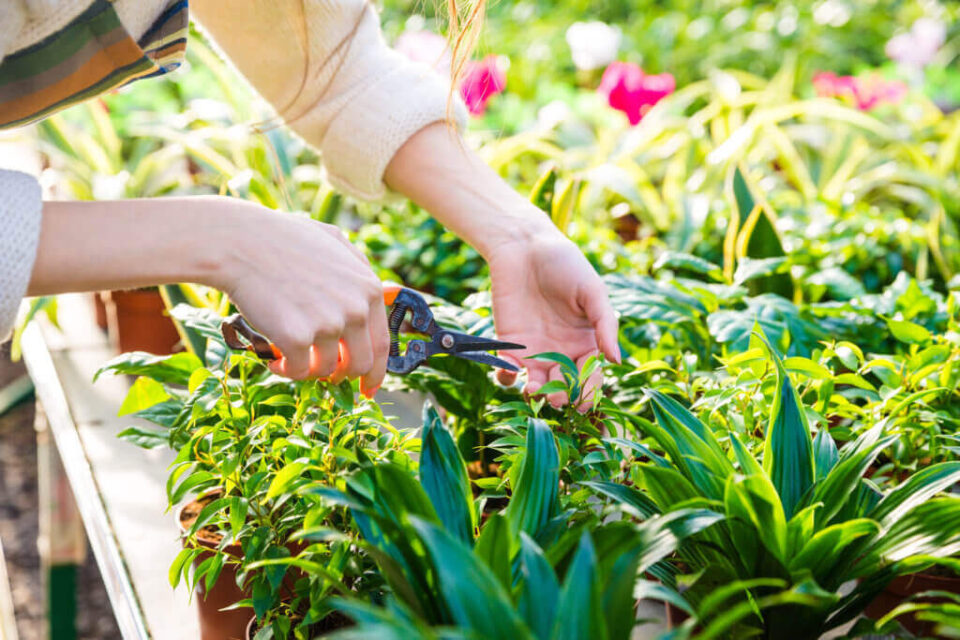Lawn is a key element in any garden. How to plant it and what are the keys to a successful planting.
Having a beautiful garden is something that we can all achieve if we learn how to plant grass and follow some steps that experts recommend so that it is born healthy and strong. Varieties of seeds, breads, materials, tools and tips to keep it divine.
Sowing grass seeds: materials
Table of Contents
To begin, it is important that you carry out some previous steps to prepare the soil. You should also have some materials that will facilitate the task.
You need few items and they are easy to get. It is best to make sure you have them before starting this task.
materials
- Grass seeds (the variety of your choice).
- Shovel and rake.
- Garden gloves.
- Fertile land.
How to prepare the land for sowing
The most important thing is that the soil is in good condition and that the earth can absorb the water without weighing it down. To drain well, it must be loose, and to achieve that, it is best to mix it with sand.
We share some tips to properly prepare the land:
- I stirred the soil up to 15 to 20 cm deep. You can wet it to facilitate the work.
- Remove weeds and roots from other plants, as well as rocks and other objects you find.
- Spray the land with a non-residual herbicide to ensure that there are no traces of weeds that can interfere with the proper growth of the lawn.
- Rake the ground level to prevent pools of water from forming and the soil not draining as it should.
- Then add a layer of sand to the surface to help create good drainage.
- Finally, throw in a layer of fertile soil to create a soft and fluffy mattress that favors growth.
How to plant grass
Once you’ve prepared the soil, the next step is to plant. We tell you how to do it step by step:
- False sowing : before you start, you should do what is called a false sowing to ensure that the soil is in optimal condition. The process consists of watering that portion of land for several days so that, if there are other seeds, they germinate.
- Weeding : most likely, some weeds will grow during these days. You must remove them and make sure that the soil is very clean to make room for the grass that you will plant. This point is essential because, if you do not remove all the weeds, they will deprive your new planting of nutrition.
- Fertilize : Layer a 5 to 7 cm layer of fertilizer with mixed sand and soil to form a loose, nutritious cushion for the water to drain.
- Rake the soil as if you had a plow to form the spaces where you will dump the seeds and roll over to flatten the soil, making sure the soil is even.
Once you have done this, it is time to sow. To do this, you must bear in mind that the way to spread the grass seeds is manual and handfuls everywhere.
Make sure to spread around the edges of the plot first, and then continue through the rest. Always do it in the same direction. Then make a second pass in a cross direction to ensure that all ground is well covered.
When the grass grows 2 to 3 cm, it is time to make a slow-release compost to strengthen the newly grown grass.
Remember that if the grass grows uneven or there are places where it does not turn on, you will have to overseed until everything is perfectly covered.
When to sow grass
Like other plants, the best time to plant lawns is fall and spring. Ideally, let the winter season pass because low temperatures and frost burn the delicate shoots and growth does not thrive.
Depending on the particular characteristics of each area, this may vary. It is because there are regions that maintain the summer heat for longer, which facilitates growth.
Lawn loaves – how to lay them
To place the grass loaves you must prepare the land in the same way as if you were to sow the seeds: you have to water it so that the weeds grow and be able to remove them. The big difference is that, instead of spreading the seeds, you are going to place the grass loaves that come in squares or in rolls.
To place the grass bread correctly, you must make sure that it is next to each other, well arranged so that they are at the same height and the grass mattress grows even.
Remember that if you cannot cover the entire surface, it is best to cut the bread or roll with a sharp straight shovel or a knife. Leave it as you need to cover the gaps that were left free. It is important that you adjust the measurements to your needs.
Once you have done that, you have to comply with 3 fundamental steps:
- Pass a roller through the joints of the loaves so that they come together well.
- Water with plenty of water every day in the morning or at night. Never in full sun.
- Don’t step on the loaves for 15 to 20 days after planting.
Types of grass: which one to choose
There are a wide variety of types of grass, but some are better known than others due to their easy growth and aesthetic power. Some very popular options, which work well in our country:
- Bermuda grass (Cynodon dactylon): known as fine grass or grass. It is the most used variety both in gardens and in public parks and football stadiums.
- Bahía Grass (Paspalum notatum): it is a variety with thick, dark green leaves. In addition, as it grows with very deep roots, it supports traffic and trampling.
- Kikuyu (Pennisetum clandestinum): it is a rough grass and its leaf is wide. It withstands the salty climates of the coast and handles heat and drought very well. It is necessary to cut it frequently because it grows very fast.
- Agrostis (Agrostis stolonifera): it is the typical grass of the golf courses and it is used to form the grenees. It is a fine grass, which is cut very close. In addition, it does not take on a yellow hue and its appearance is as if it were a carpet.
- Fescue (Festuca arundinacea): this species is perennial and withstands all climates. In addition, it does not require much maintenance and is highly resistant to footprints.
- Ray-Grass (Lolium perenne): it grows fast and has a very fine leaf. When it grows, it forms a fairly dense coat and is bright green. Important fact: it needs abundant watering.
The lawn needs specific care like any other plant. Remember that you never have to water it in full sun, since in this way its roots can burn.
Following these tips, you will see how your garden transmits great serenity while embellishing your home with the most beautiful tones of nature.

